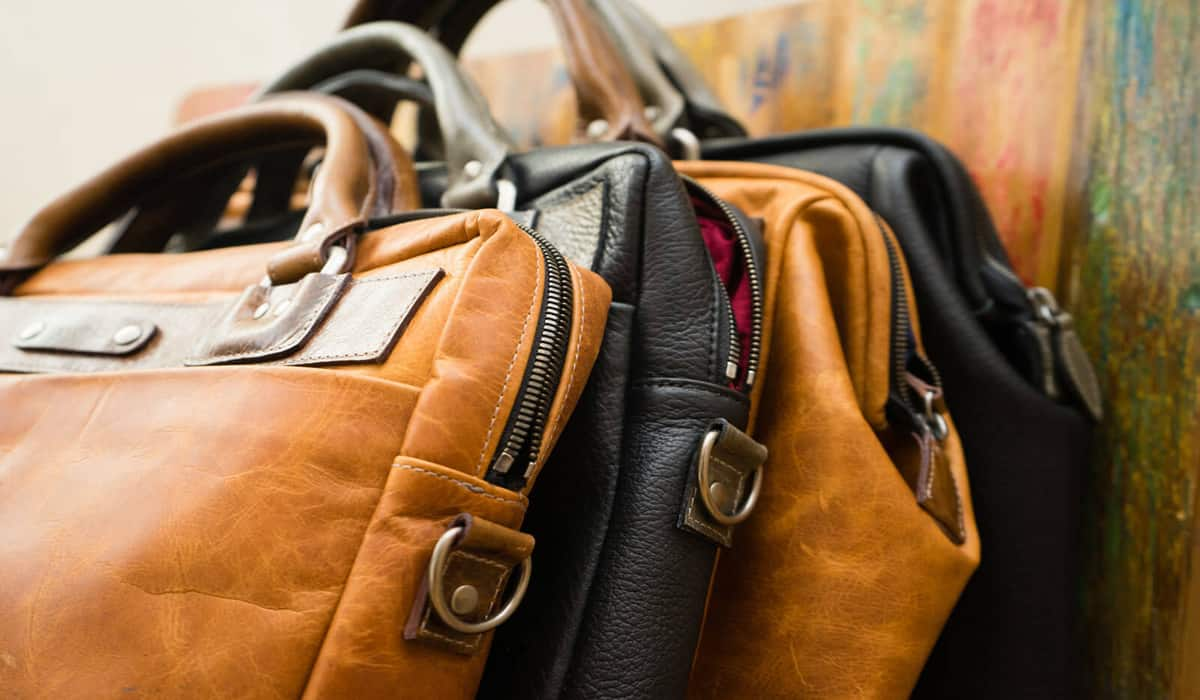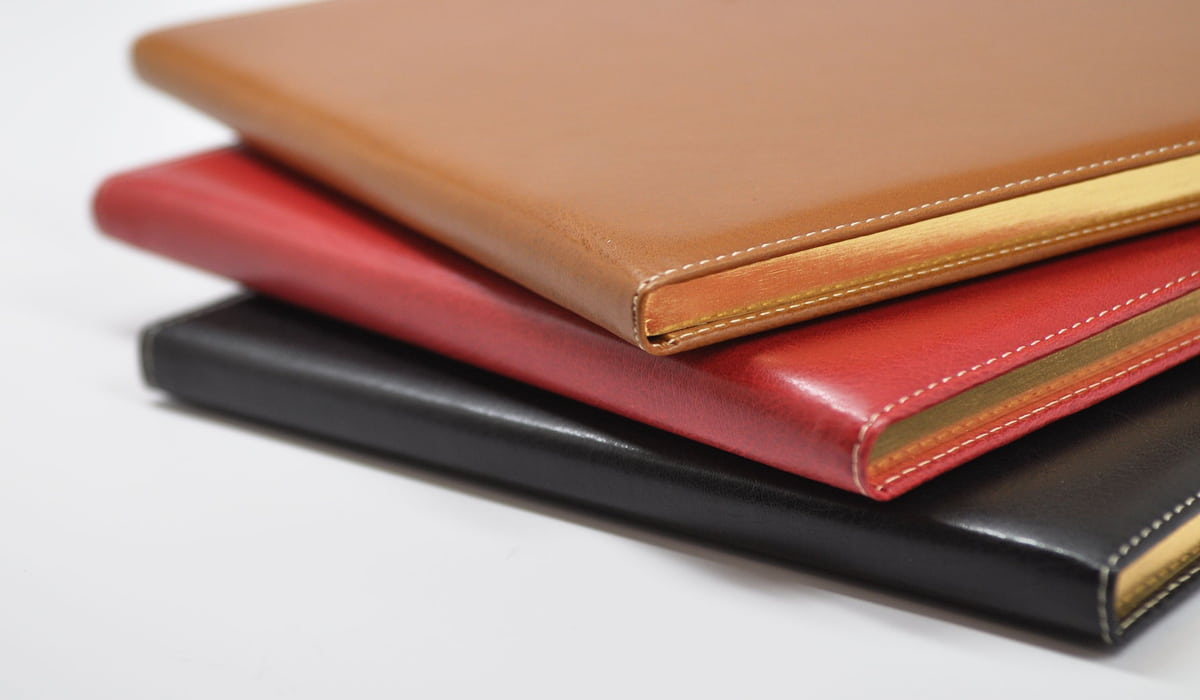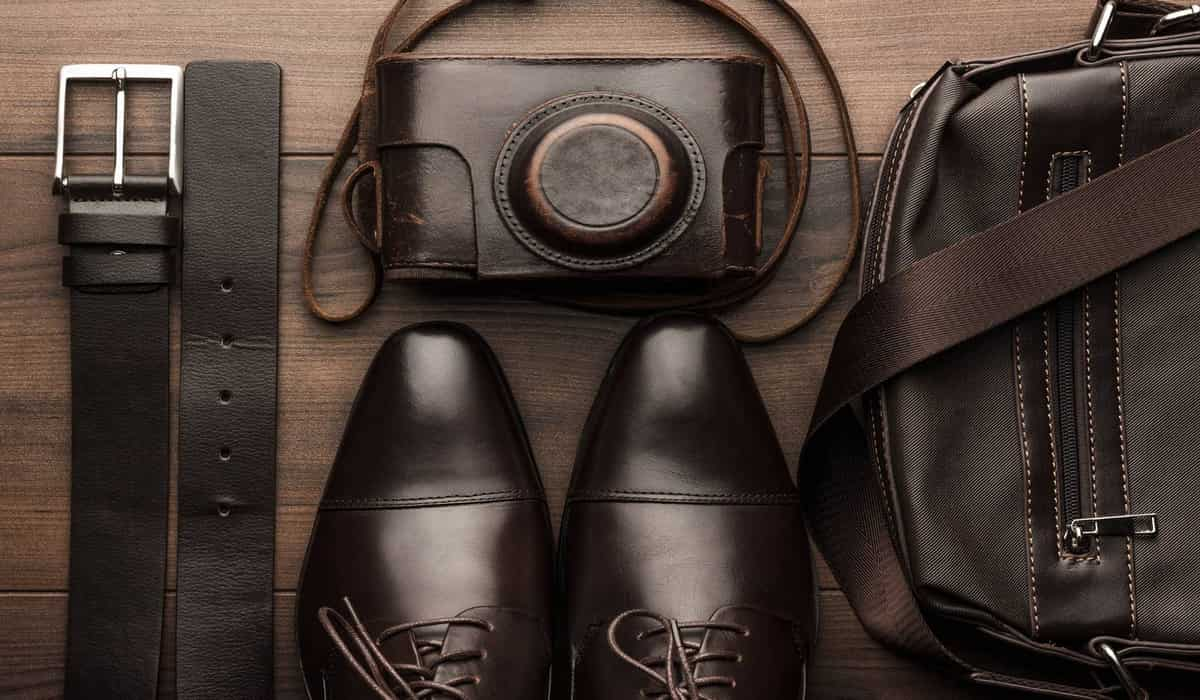Like Brazilian coffee beans or Argentinian grass-fed beef, Italian leather products are synonymous with quality, tradition, and being the best. The Italian peninsula has long been considered the center of world leather production. Simply put, Italian leather is produced in Italy. The country is home to many of the best tanneries in the world, and they usually specialize in a special method of making leather called vegetable tanning. The process involves using natural plant tannins - organic substances found in the bark of trees, plants, and fruits - to create leather. The renowned premium leather from Italy is vegetable-tanned full grain leather. When removed from the outermost layer of the animal hide (the most durable part of leather), full-grain leather has an unchanged grain structure and is therefore very durable. Italian artisans can produce special types of leather by combining the highest quality leather grains with a complex but beneficial tanning method (vegetable tanning). However, it should be noted that the mention of "Italian leather" is not protected and cannot guarantee a certain level of quality to the consumer. This sentence only announces where the material was made. Cheaper, lower-quality leather is also produced throughout Italy. "Italian leather" is indeed an all-encompassing geographical term, but sellers will often use it in their marketing materials to benefit from the prestige associated with it.  There are identifying signs of high-quality Italian leather goods, but more on that later. Let's first explore Italy's historical relationship with leather. Italian leather tanning has a rich socio-cultural history dating back to the Etruscan civilization of the 8th century BC. The Etruscans were the first to explore and use vegetable tanning, the basic principles of which remain the same to this day. Key to these early advancements were professional shoemakers who produced durable sandals for everyday use. In Roman times, the production of leather was of increasing importance to society as the material was used for everything, including transportation, warfare, and clothing. During this period, vegetable tanning also became a stable industry, and intricate leather work began to flourish in the Roman Empire. In AD 79, excavations in the ruins of Pompeii, a city destroyed by a volcanic eruption, revealed a once thriving tannery. The Arte dei Cuoiai, aka leather workers' guild, was founded in 1282. It's one of Florence's many professional guilds (others exist in developed cities like London), a secular institution that protects trade secrets and enforces strict quality standards. This ensures that the city's leather industry remains highly competitive on the international stage. To this day, renowned leather artisans continue to work on the banks of the Arno, from Florence to Pisa. At the start of the 20th century, some of the most important fashion houses began their commercial life as leather goods stores, including Prada (1913), Gucci (1921), and Ferragamo (1927). In the decades that followed, the demand for its products allowed the Italian leather industry to grow in position and profitability.
There are identifying signs of high-quality Italian leather goods, but more on that later. Let's first explore Italy's historical relationship with leather. Italian leather tanning has a rich socio-cultural history dating back to the Etruscan civilization of the 8th century BC. The Etruscans were the first to explore and use vegetable tanning, the basic principles of which remain the same to this day. Key to these early advancements were professional shoemakers who produced durable sandals for everyday use. In Roman times, the production of leather was of increasing importance to society as the material was used for everything, including transportation, warfare, and clothing. During this period, vegetable tanning also became a stable industry, and intricate leather work began to flourish in the Roman Empire. In AD 79, excavations in the ruins of Pompeii, a city destroyed by a volcanic eruption, revealed a once thriving tannery. The Arte dei Cuoiai, aka leather workers' guild, was founded in 1282. It's one of Florence's many professional guilds (others exist in developed cities like London), a secular institution that protects trade secrets and enforces strict quality standards. This ensures that the city's leather industry remains highly competitive on the international stage. To this day, renowned leather artisans continue to work on the banks of the Arno, from Florence to Pisa. At the start of the 20th century, some of the most important fashion houses began their commercial life as leather goods stores, including Prada (1913), Gucci (1921), and Ferragamo (1927). In the decades that followed, the demand for its products allowed the Italian leather industry to grow in position and profitability. 
Italian leather
In contemporary times, the true Italian Association of Vegetable Tanned Leather has played a vital role in maintaining the Tuscan tradition of vegetable tanning. The organization's 20 tanneries share a philosophy that values age-old expertise, craftsmanship, and environmental responsibility. The tannery continues to produce the finest leather in the world. Part of the success can be owing to the know-how passed down from generation to generation by leather artisans. This is particularly relevant to vegetable tanning, where the specific mixture of tannins used in the process has a decisive influence on the leather's physical properties, such as color and texture. The master tanner adjusts his blends to the desired finish, often relying on the wealth of information passed on to him by his ancestors. Another characteristic of the Italian leather production process is that each step is highly specialized. Vegetable tanning is a long and complex process that can take up to 60 days. The division of labor allows factories to focus on certain aspects of the process, such as the application of finishing treatments, thus increasing efficiency and expertise: each of these affects the price and quality of the leather. While Italian leather artisans rely heavily on their heritage, they are simultaneously eager to innovate and improve upon existing techniques.  Much of it comes down to a determination to embrace the latest technological developments. 80% of machinery used for tanning is produced in Italy, allowing the country's tanneries to keep pace with technological developments. In addition, constantly changing legislative requirements ensure that companies are forward-looking and that the quality of leather remains high. Just as Parmigiano Reggiano is made to exacting specifications, so are Italian leatherworking laws. Manufacturers found guilty of neglecting quality measures risk disbarment. From an environmental perspective, the Italian tanning industry is also leading the industry's sustainability agenda, but more on that later. Designer bags are probably the consumer product most closely associated with Italian leather. Over the decades, the enduring popularity of fashion houses such as Prada, Bottega Venetta, and Gucci has thrust the material into the international limelight. The fashion world values Italian leather for its versatility and beauty, but its practicality goes far beyond handbags. From shoes to bags and car interiors, Italian leather is an excellent choice for producing everyday items that can withstand heavy use and weather. Because vegetable-tanned leather has a superior look, feel, and aging pattern, it can also be used to make fashion accessories such as Italian leather wallets and belts.
Much of it comes down to a determination to embrace the latest technological developments. 80% of machinery used for tanning is produced in Italy, allowing the country's tanneries to keep pace with technological developments. In addition, constantly changing legislative requirements ensure that companies are forward-looking and that the quality of leather remains high. Just as Parmigiano Reggiano is made to exacting specifications, so are Italian leatherworking laws. Manufacturers found guilty of neglecting quality measures risk disbarment. From an environmental perspective, the Italian tanning industry is also leading the industry's sustainability agenda, but more on that later. Designer bags are probably the consumer product most closely associated with Italian leather. Over the decades, the enduring popularity of fashion houses such as Prada, Bottega Venetta, and Gucci has thrust the material into the international limelight. The fashion world values Italian leather for its versatility and beauty, but its practicality goes far beyond handbags. From shoes to bags and car interiors, Italian leather is an excellent choice for producing everyday items that can withstand heavy use and weather. Because vegetable-tanned leather has a superior look, feel, and aging pattern, it can also be used to make fashion accessories such as Italian leather wallets and belts. 
The best Italian leather products
Premium Italian leather (full grain vegetable tanned variety) has a range of unique characteristics. First, it has a strong earthy, woody aroma – something you might already associate with the best leather products. And it tends to be greasier than leather made in other countries, mainly due to certain finishing treatments applied. In terms of physical properties, high-quality Italian leather generally exhibits warm tones that improve over time. Because leather is porous, it gradually absorbs different elements - like water and dirt- when it comes into contact with them. Over time, fine Italian leather goods often develop a unique sheen: this is the desired outcome in the minds of many leather connoisseurs. From a structural point of view, Italian leather is known to be flexible and resistant. Since the grain structure of full-grain Italian leather has not changed, natural marks on the surface of the animal leather will still be noticeable after the tanning process is complete. Scars or bite marks fall into this category. As a result, each full-grain leather has a completely unique and natural look, which only adds to the aura of exclusivity. Italian leather exports fell by 27% in 2020, mainly due to lower demand due to the pandemic. In addition to this, the country is also facing pressure from other leather-producing countries like China, India, and Brazil. Chrome tanning, another production method using artificial chemicals, is booming in Asia.  Italians risk losing market share to factories that sell cheap, low-quality leather intended for mass production. However, the picture is not entirely bleak. On the one hand, Italian tanneries are pushing for an eco-sustainability movement in the industry. Tuscan tanners are now striving not only to deal directly with the decontamination but also to deal with by-products properly. In a society where consumers increasingly demand social responsibility from the industry, Italian tanneries are taking a proactive approach. The rise of vegan leather is linked to the growing attention to sustainability in the leather industry. This synthetic leather is presented as an ethical alternative—a way to reduce meat consumption and the significant greenhouse gas emissions associated with livestock farming. Italian tanneries are again pushing to diversify leather. There are other reasons for optimism. Demand for luxury leather goods is expected to grow in the coming years, driven by the rise of Asia's affluent middle class. The Italian leather industry remains a behemoth with a wealth of talent and expertise. There is no doubt that Italy will remain the dominant and innovative force in the international leather market for the foreseeable future, especially as luxury goods are expected to see double-digit growth in 2021. IItalian tanneries have been at the forefront of leather production by taking advantage of age-old techniques and keeping an open mind to technological innovation. Combined with strict national regulations for the industry, these factors ensure that Italian leather – especially vegetable-tanned full-grain leather – remains a sought-after commodity.
Italians risk losing market share to factories that sell cheap, low-quality leather intended for mass production. However, the picture is not entirely bleak. On the one hand, Italian tanneries are pushing for an eco-sustainability movement in the industry. Tuscan tanners are now striving not only to deal directly with the decontamination but also to deal with by-products properly. In a society where consumers increasingly demand social responsibility from the industry, Italian tanneries are taking a proactive approach. The rise of vegan leather is linked to the growing attention to sustainability in the leather industry. This synthetic leather is presented as an ethical alternative—a way to reduce meat consumption and the significant greenhouse gas emissions associated with livestock farming. Italian tanneries are again pushing to diversify leather. There are other reasons for optimism. Demand for luxury leather goods is expected to grow in the coming years, driven by the rise of Asia's affluent middle class. The Italian leather industry remains a behemoth with a wealth of talent and expertise. There is no doubt that Italy will remain the dominant and innovative force in the international leather market for the foreseeable future, especially as luxury goods are expected to see double-digit growth in 2021. IItalian tanneries have been at the forefront of leather production by taking advantage of age-old techniques and keeping an open mind to technological innovation. Combined with strict national regulations for the industry, these factors ensure that Italian leather – especially vegetable-tanned full-grain leather – remains a sought-after commodity.
